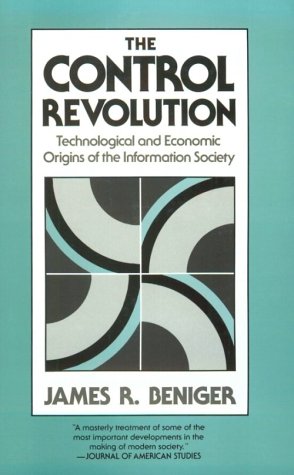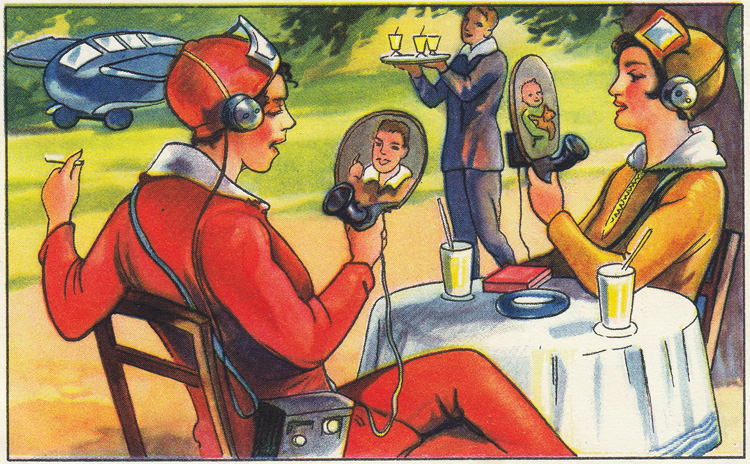Echte Wagner Margarine, Album 3, Serie 12-13: Zukunftsfantasien (c1930)
Filed under artist publishing | Tags: · communication technology, science fiction, television, transport
This image comes from a set of collectible cards issued by the margarine factory Wagner & Co. in the northern German town of Elmshorn, circa 1930. The album is arranged in 36 series of 6 cards each; two of them (12-13) are titled “Zukunftsfantasien” [Fantasies about the Future]. The author of the cards is unknown.
The caption under the image reads: „Drahtloses Privattelefon und Fernseher. Jeder hat nun sein eigenes Sende- und Empfangsgerät und kann sich auf einer bestimmten Welle mit Bekannten und Verwandten unterhalten. Aber auch die Fernseh-Technik hat sich so vervollkommnet, daß man dem Freunde gleichzeitig ins Angesicht schauen kann. Sende- und Empfangsgerät sind nicht mehr an den Ort gebunden, sondern werden in einem Kasten von der Größe eines Photoapparates immer mitgeführt.“
Publisher Heinz Wagner / Holsteinsche Pflanzenbutterfabriken Wagner & Co., Elmshorn in Holstein, c1930
1 of 18 nonpaginated cardboard sheets
HT RidT
Low resolution JPGs (via)
View online (cards only, on Retro-Futurism.de)
Cards assembled into PDF (via)
James R. Beniger: The Control Revolution: Technological and Economic Origins of the Information Society (1986)
Filed under book | Tags: · advertising, agriculture, bureaucracy, computing, cybernetics, economy, energy, history of technology, industrial revolution, industry, information society, management, mass media, radio, society, technology, telegraphy, telephone, television, transport

“James Beniger traces the origin of the Information Society to major economic and business crises of the past century. In the United States, applications of steam power in the early 1800s brought a dramatic rise in the speed, volume, and complexity of industrial processes, making them difficult to control. Scores of problems arose: fatal train wrecks, misplacement of freight cars for months at a time, loss of shipments, inability to maintain high rates of inventory turnover. Inevitably the Industrial Revolution, with its ballooning use of energy to drive material processes, required a corresponding growth in the exploitation of information: the Control Revolution.
Between the 1840s and the 1920s came most of the important information-processing and communication technologies still in use today: telegraphy, modern bureaucracy, rotary power printing, the postage stamp, paper money, typewriter, telephone, punch-card processing, motion pictures, radio, and television. Beniger shows that more recent developments in microprocessors, computers, and telecommunications are only a smooth continuation of this Control Revolution. Along the way he touches on many fascinating topics: why breakfast was invented, how trademarks came to be worth more than the companies that own them, why some employees wear uniforms, and whether time zones will always be necessary.”
Publisher Harvard University Press, 1986
ISBN 0674020766, 9780674020764
493 pages
via babyalanturing
Review (JoAnne Yates, The Journal of Interdisciplinary History, 1988)
Review (Krishan Kumar, Journal of American Studies, 1988)
Review (Kirkus Reviews)
Book-inspired website
Publisher
PDF (16 MB, updated on 2016-6-16)
Comment (0)

